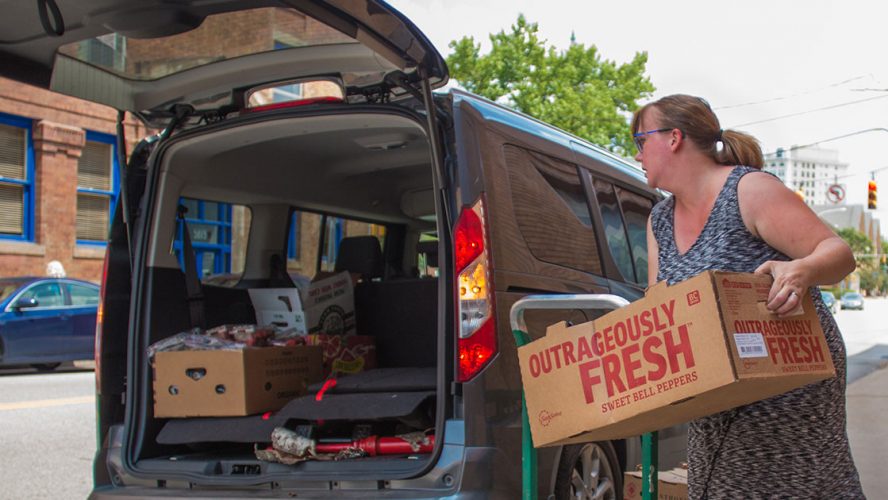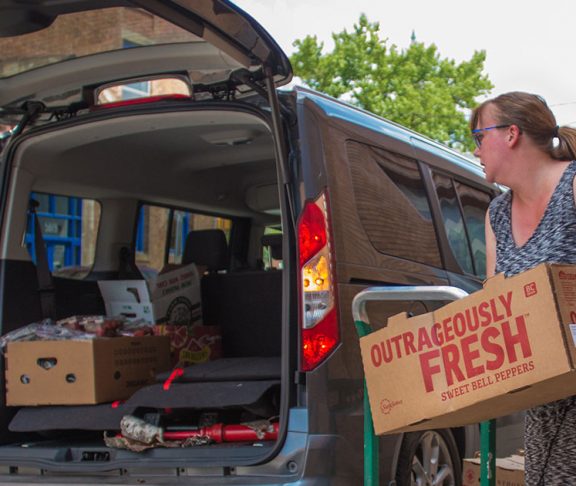412 Food Rescue’s CEO and co-founder, Leah Lizarondo, demonstrates how her non-profit is creating a measurable impact on food insecurity and environmental sustainability in communities.

Leah Lizarondo
CEO and Co-Founder, 412 Food Rescue
What is the mission of 412 Food Rescue, and how does the organization work? Can you explain the importance of fighting hunger in a sustainable way?
The mission of 412 Food Rescue is to prevent perfectly good food from entering the waste stream. We tackle the difficult problem of food rescue at retail and have designed technology, programs and services that scale food rescue in communities. It’s important to understand that technology is an important part of the equation but only one part. Our services work with food donors in mind. Our programs ensure that we have a reliable volunteer transport network that grows as our donor and beneficiary network grows. Our approach is so effective that we have a 99 percent service level with our donors. Hunger is a challenge that is rooted in equity, but food rescue is an intervention that is a response to the extraordinary opportunity that all this food surplus presents. With many of our neighbors in need, it’s our obligation to redirect food from going to waste.
What has been the most rewarding part of co-founding and sustaining a non-profit? What’s the best advice you’ve received along the way?
The most rewarding part of 412 Food Rescue is we get to create innovative solutions to food waste — and see how communities have really come together to take part in that solution. Everyone hates food waste, and when companies and individuals learn that there is a way to prevent it and impact hunger at the same time, it’s a no-brainer. One of the things that has been important to us is giving food rescue heroes the tools to spread the word. That’s how we have grown to be the largest volunteer food transport network in a single region. We are facilitating over 15,000 food rescues successfully. Not all technologies are created equal because it takes more than technology. We are very excited to see this scaled impact in other cities.
How has your education and history of working in non-profits helped build your passion for fighting food waste?
My time at Carnegie Mellon University and my passion for food truly drives what is 412 Food Rescue today. It is technology for good — the highest use of technology. It is technology that is driven by everyone’s desire to do good: the food retailers we work with, the people who drive the food (our food rescue heroes) and the nonprofits partners that distribute this healthy food to people they serve. Everyone has come together to create this new network; we haven’t seen anything with this much potential to scale in a long time. And we certainly have not seen a disruptive innovation in hunger intervention like this in 50 years.
What are the biggest challenges that require change in order to scale food rescue everywhere?
We have to understand it as a logistics challenge. There are technologies out there but they fail to address the process from end to end. It’s not just about providing a donor portal — we need to understand how food retail processes work. It’s not just about donating to nonprofits — we need to understand what their limits and potential are. And it’s not just about providing an Uber-like app for volunteers. We need to understand what drives people.
Resources exist to eliminate hunger nationwide but are not properly allocated. In your opinion, what needs to happen to change this?
I think you have hit the nail on the head on this one. Solving the problem of food redirecting food surplus is more than just solving the transportation problem. It’s about understanding how we change our current models of food distribution.
What are the top ways to help fight the hunger crisis for restaurants?
Particularly in regards to food waste? I like to talk about food in terms of surplus, not waste. It’s not waste until it gets to the trash bin. So the job is to prevent good food from going there. I urge restaurants to work with local food rescue organizations — our technology will soon power many of them — and not feel that their donations will be “too small.” That is the whole point of retail food rescue and having a grassroots and extremely agile volunteer transport network that is able to take all sizes of donations. No amount of food goes to waste, and those donations add up to make up a significant amount of food. Have a tray of sandwiches? A small shelter that can use that. Catering an event for 500 but only 400 showed up? You can now feed 100 people in need. How amazing is that?

